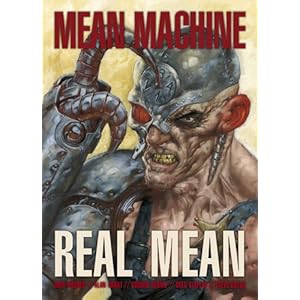
Many years ago, when I first started tackling detective fiction - principally British detective fiction from the first half of the 20th Century - Margery Allingham was the author who broke my interest. I tried two of her novels about the weird, secretive Albert Campion and just plain gave up. In time, I came to realize that wasn't fair; what had actually killed my interest in the genre was that run of a dozen Agatha Christie stories that I labored through before I started Allingham. Frankly, twelve of those things and you need to set the task aside for a while, and not chase it.
I realized that I never gave Allingham a fair shake. I tried to make it up to her - I gave her name to a character in a comic that I published for several years - but I never got back to actually reading the Campion stories. Finally, I picked up two of them, cleared my throat and started again. Death of a Ghost has an appealing name. Published in 1934, it promises some unpleasantness in the art world.
It didn't begin well. Sixty pages in, all I had to say to myself was "Oh, Lord, it's worse than I remembered them." A mob of supporting characters, none of whom I could begin to sympathize with or understand, half of whom are deliberately unpleasant and vulgar, talked piffle about egotistical blowhards who died two decades earlier, and all of these bohemian idiots are suffered silently by the almost characterless Albert Campion, a bespectacled, secretive oddball who, thanks to the BBC, we now know looks like Peter Davison in horn rims.
Sixty pages in, mercifully and very, very pleasantly, a plot appears. There's the curious and cunning murder of a middling artist, and then something thunderously weird happens. The work of the dead middling artist just flat out vanishes. Somebody has gone to an awful lot of trouble - even for a period British mystery, where a crime's execution is usually really overwrought - to erase any evidence of Thomas Dacre's art.
Where this story leads isn't really very surprising. Perhaps in 1934, the term "ghost" was obscure and uncommon, but I had the perpetrator pegged ages before Campion did. Normally, that bothers me a little, as I prefer not to speculate about whodunnit in this sort of book, but the construction of this plot remained really fun and kept my attention. I'm looking forward to the next Allingham novel that I bought, and recommend this one with the caveat that the first sixty pages are an unfortunate slog.

